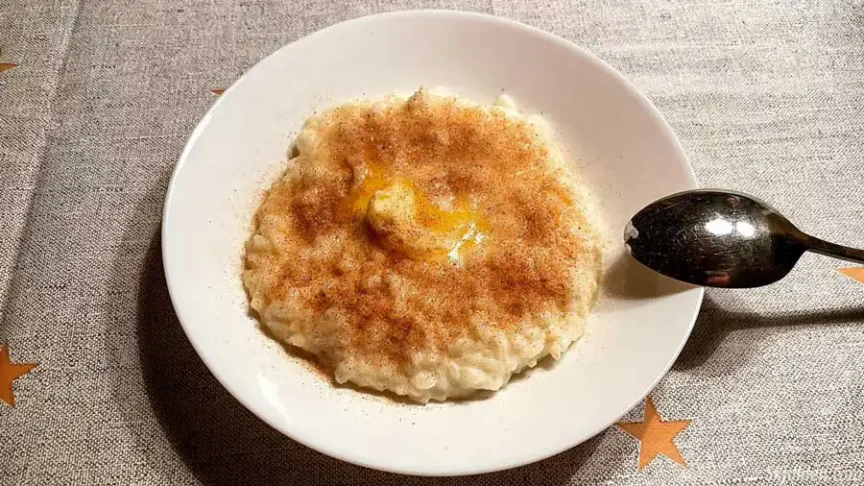Risengrød is a traditional Scandinavian rice porridge dish that has been a staple of Yule (Jul) celebrations for many generations. Originally, porridge at Yule was made from barley, a grain well-suited to the cold, northern climates and essential to festive meals.
The transition from barley to rice in Yule porridges began in the early 18th century with the introduction of rice to Europe. As trade routes expanded, rice arrived from Asia, where it was viewed as an exotic and luxurious ingredient.
Initially, only the wealthy could afford this expensive import. These affluent families started using rice in their holiday meals, turning the humble barley porridge into the richer, creamier Risengrød we know today.
Cultural Significance and Folklore
In medieval Scandinavia, people thought porridge could bring good luck and protect the household. They believed that the house spirits, known as nisser in Denmark and tomtar in Sweden, enjoyed porridge offerings. To keep these spirits happy, families would leave a small bowl of Risengrød in the attic.
A Playful Twist with Almonds
As rice porridge became more popular, Scandinavians added a playful tradition to the Yule feast: hiding an almond in the porridge. The lucky person who found the almond would win a small prize. This made the first course of the holiday meal exciting and fun.
By the 20th century, rice was a standard ingredient in Christmas porridge across all social classes. To maintain a sense of exclusivity and luxury, the upper class in Denmark created Risalamande, a decadent dessert version of Risengrød.
This dish, enhanced with cream and vanilla and given a French-inspired name, represented a refined take on the traditional porridge. Despite its French-sounding name, Risalamande is a Danish invention, designed to give a luxurious twist to the traditional Risengrød.
Risengrød Today
Today, Risengrød remains a cherished dish during December, though it’s less commonly served as a starter on Christmas Eve. According to a 2018 survey, only 3% of Danes eat Risengrød at the beginning of their Christmas Eve meal, yet its presence is still strong throughout the holiday season. Many enjoy it all year round for both its taste and cultural significance.
For a practical twist, any leftover Risengrød can be turned into Klatkager the next day. These rice pudding pancakes are a great way to use up leftovers, reducing waste while extending the festive enjoyment.
